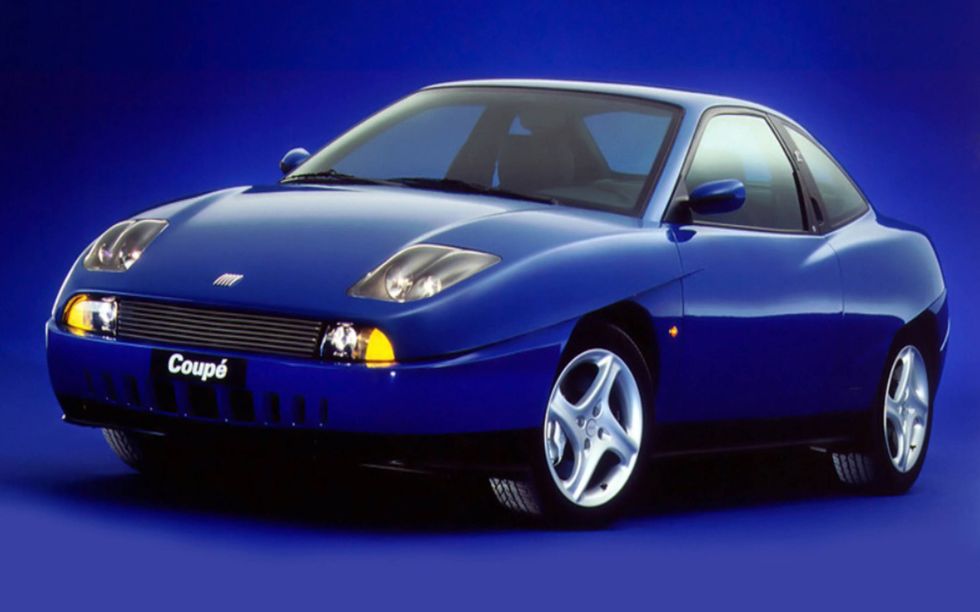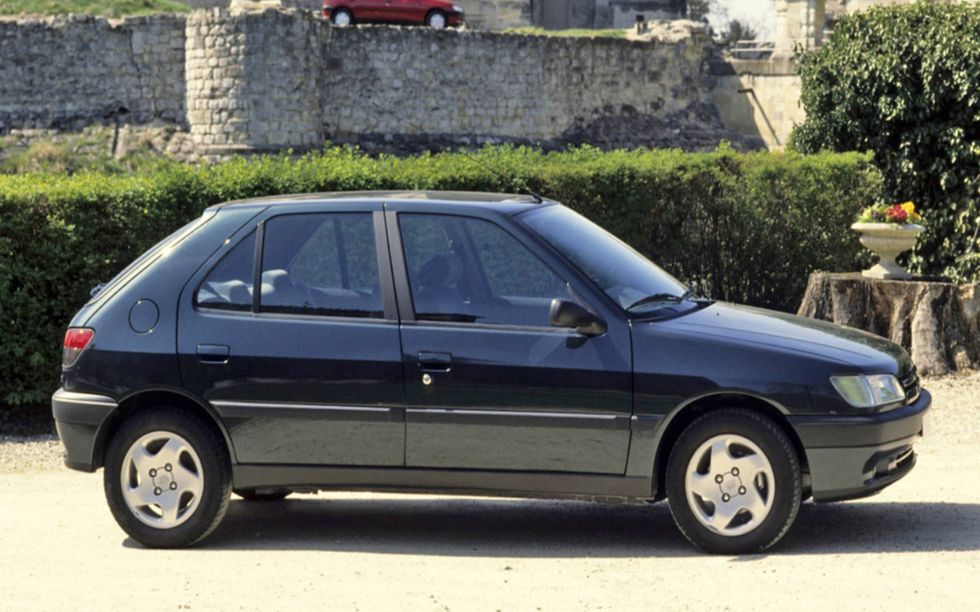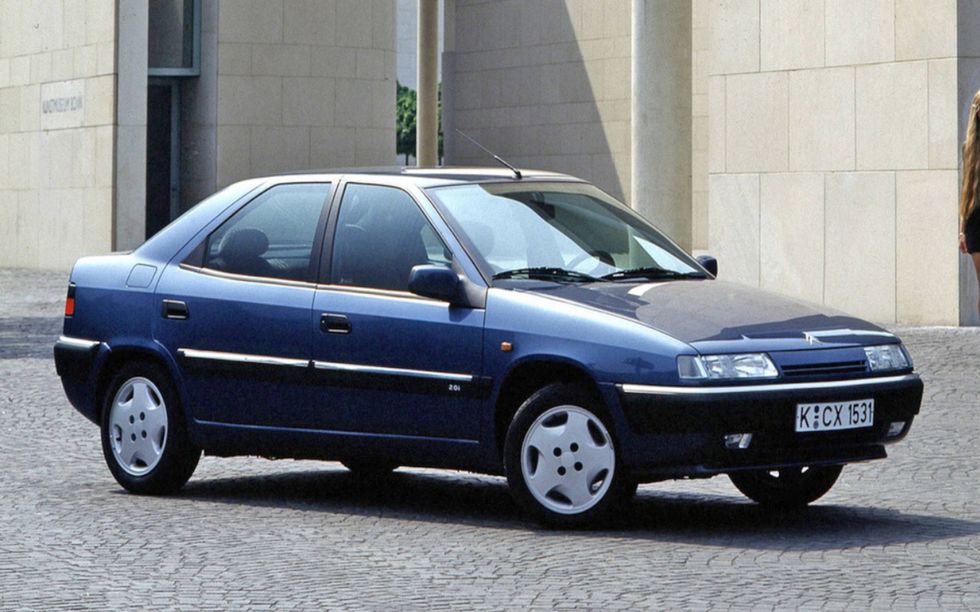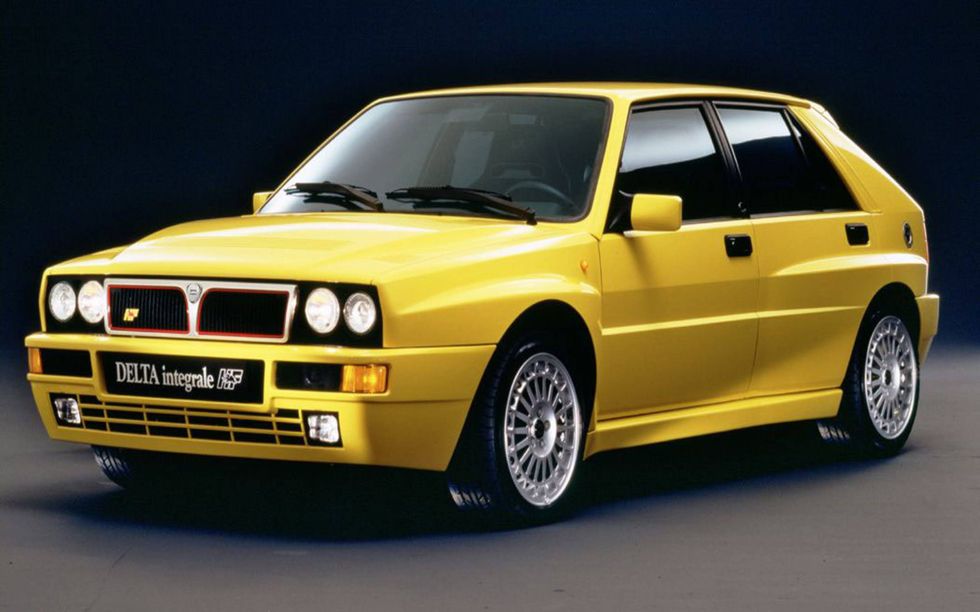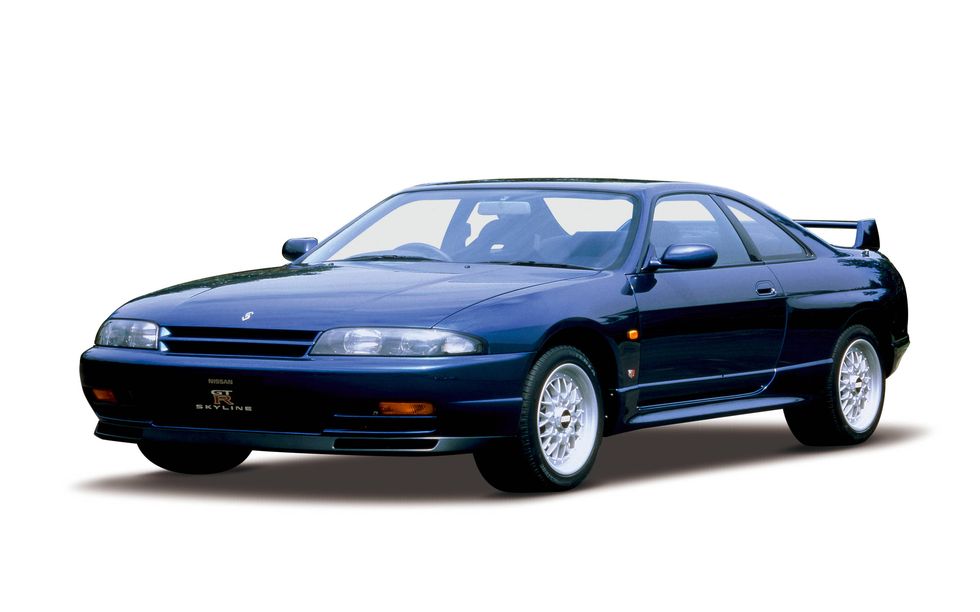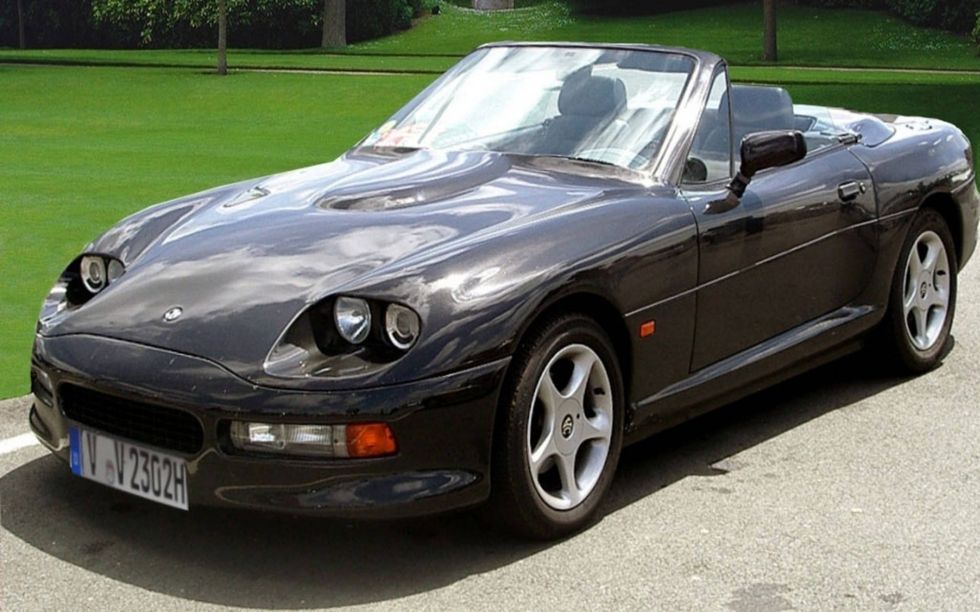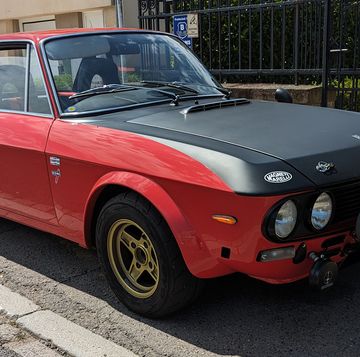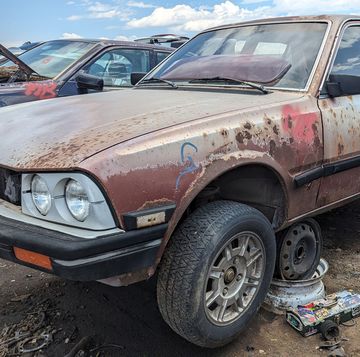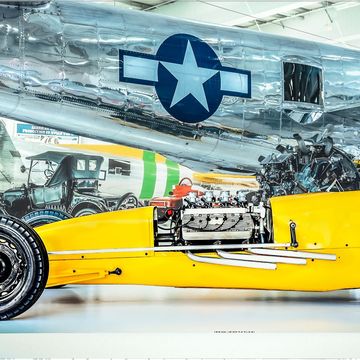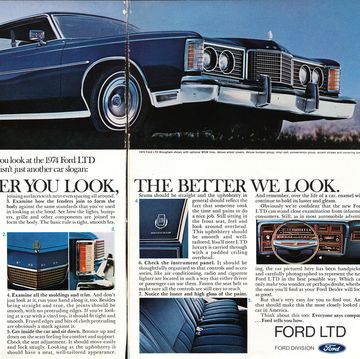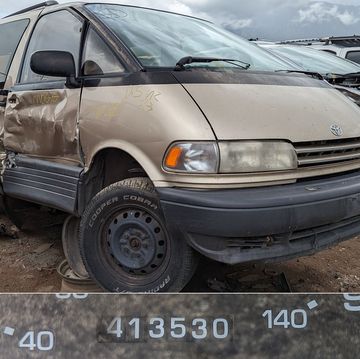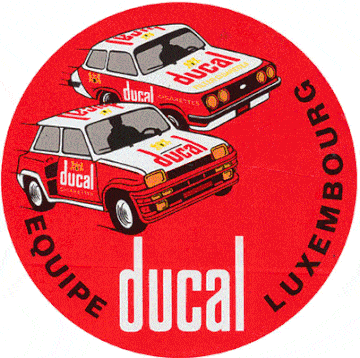Are you tired of the same cast of recent classics at the local car show, be it a Vanilla Ice-era Mustang or a Chrysler 'MC by Taserati?' Do you want to own a car that nobody else in your time zone has even heard of, much less seen on their Power Macintosh? Also, are you ready to party like it's 1993?
We know we are, so we headed to the World Wide Web with the help of our 14K modems to scope out the fresh new arrivals that will be eligible for importation in 2018.
What do the cars of 1993 offer? First of all, we are getting closer to the sweet spot of the mid-'90s European hatchery and performance cars. 1993 was the year that European automakers started to realize cars don't need sharp, boxy shapes and that body design can be fluid (but not too fluid, like a 1994 Ford Probe). 1993 was also the year that automakers started coming out of a recession-induced coma of the early 1990s, and finally got several delayed designs off the drawing boards and into dealership lots. The Class of 1993 is a diverse one, and it helps if you're a fan of inexpensive French and Italian cars.
1. Fiat Coupe
Why is it cool: Styled by none other that BMW design wizard Chris Bangle, the imaginatively named Coupe offered a spacious and modern interior along with a memorable exterior design, powered by 1.8- and 2.0-liter gas engines. The Coupe got Fiat out of its cubist phase of the 1980s, tempting buyers with its sculpted looks and capable engines.
Where to find one: Western and southern Europe.
What to pay: $3,000 to $8,000 for a clean one. These were not used sparingly, for the most part.
Will people notice it: Yes, but they won't be able to tell what it is 'cause they're not used to the old Fiat badge.
Downsides to owning one: Your local Fiat dealer will probably not be happy to source parts for you, but at least there is theoretical parts support for this model stateside.
Interior smell: Incense trying to block the smell of cigarettes.
CDs found inside: Queen, R.E.M., Alizee.
2. MG RV8
Why is it cool: It's the Rover V8-engined successor to the MGB, and more than just a successor as it used plenty of MG and Rover parts left over from MGB production. Combining a stiffer new chassis, a luxurious modernized interior and V8 power, the MG RV8 was the ultimate and most exclusive version of the British legend.
Where to find one: U.K. and Japan.
What to pay: $15,000 to $25,000.
Will people notice it: Yes they will, and they'll think it's a bodykitted MGB.
Downsides to owning one: People pestering you to sell it to them.
Interior smell: Expensive British leather, old books, pipe tobacco.
CDs found inside: The KLF, Paul Oakenfold, Paul van Dyk.
3. Peugeot 306
Why is it cool: The 306 took the VW Golf head on when it debuted in 1993, offering a sleek exterior design that remixed 205 styling themes in a larger and more versatile wrapper. Powered by a huge range of inline-four gas and diesel engines, the 306 was the large family hatch for the marque for the 1990s and beyond.
Where to find one: Western and southern Europe.
What to pay: $2,000 to $6,000.
Will people notice it: Perhaps, only if it's in a loud color. Otherwise, they might shrug it off as a Golf.
Downsides to owning one: None really, aside from getting all spare parts via air mail from Europe.
Interior smell: Spilled coffee.
CDs found inside: Pet Shop Boys, U2, ATB.
4. Citroen Xantia
Why is it cool: This Bertone-styled midsize sedan brought Citroen into the 1990s and into competition with more stolid fare while preserving the individualistic spirit of past Citroen models. Offering a spacious and comfortable interior that put rivals to shame, the Xantia was available in sedan and wagon form while offering a lineup of thrifty engines ranging in displacement from 1.6 to 2.9 liters for the range-topping V6.
Where to find one: All over Western Europe.
What to pay: $2,000 to $7,000.
Will people notice it: Perhaps. This one is kind of on the fence, as in dull colors it can masquerade well with other 1990s cars, and can be mistaken for a Saab or Volvo.
Downsides to owning one: The Hydractive II computer-controlled hydropneumatic self-leveling suspension is a technology that sounds scary, and may require Bull computers to solve if it goes wrong. (It will go wrong.) There is also the Activa active suspension system, which in these cars will be 25 years old if you buy one. It's also computer controlled. These are not complex computers, but finding someone in the U.S. to work on them gives us pause.
Interior smell: French cigarettes.
CDs found inside: Duran Duran, Madonna, Ace of Base.
5. GAZ 3105
Why is it cool: It's the short-lived successor to the huge GAZ 14, combining a sleek and modern exterior with V8 power and all-wheel drive. The roomy 3105 was artisanally made in small batches, as marketing would say now, for Russian government agencies as chauffeured limos, with a little under 100 cars leaving the production line over the course of three or four years. (That's what we call batch-made.)
Where to find one: Just Russia really.
What to pay: $10,000 to $20,000
Will people notice it: Yes, and they will think it's an Oldsmobile.
Downsides to owning one: No parts support whatsoever, everything has to be refabricated from scratch.
Interior smell: Oil, gasoline fumes, Kosmos cigarettes.
CDs found inside: Oleg Gazmanov, Lyube, Vladimir Krug.
6. Nissan Terrano II
Why is it cool: Styled by Ercole Spada and built in Spain, the Terrano II is an SUV that was designed with the European market in mind, offering a versatile tall-wagon layout and a modest price. Powered by thrifty gas and turbodiesel engines ranging in displacement from 2.4- to 3.0-liters, the Terrano II was available in three- and five-door form form 1993 all the way through 2006.
Where to find one: Spain is a good bet, since this is where they were made. In Japan, this car was sold as the Nissan Mistral, in case you want an RHD example.
What to pay: $3,000 to $6,000. There are tons of these in Europe.
Will people notice it: Yes, and they'll think it's a RAV4 or something like that.
Downsides to owning one: None, really.
Interior smell: Turkish bubble gum.
CDs found inside: Kaistar, New Order, Chicane.
7. Lancia Delta Integrale Evoluzione II
Why is it cool: We sampled a Delta Integrale at the Lane Motor Museum a few years back, and we immediately understood why those in the know love the things -- think of it as a spicy Italian alternative to the Audi Sport Quattro, with plenty of racing and rally heritage to back up its box flares, and you’ve got the idea. (Only difference is, Audi still makes cool cars, and Lancia sells re-badged Chrysler minivans).
The Evoluzione II, is the pinnacle -- the best, or at least the most advanced, example of the breed. Introduced in 1993, it’s the culmination of first-gen Deltadom: Giorgetto Giugiaro’s timeless design matched by performance that still feels modern. Not an all-new vehicle by any means, it’s more of…an evolution, if you will. Power comes from a 2.0-liter 16-valve turbocharged inline-four; a Marelli-sourced digital engine control system, which may or may not be a total nightmare to maintain, helps the motor put down its stated 212 hp through all four wheels. 0-60 takes a stated 5.7 seconds, which isn’t bad for a 25-year-old car, but as you can imagine, it’s more about the driving experience than pure speed.
Where to find one: Scattered across western Europe -- there weren't that many made, and we can't think of any place where they'd clump together.
What to pay: Good examples seem to start at about $55,000 these days; great examples can be close to double that.
Will people notice it: Assertive paint colors make it all but unmissable. Enthusiasts will recognize it, but others might think it's just a tarted-up 1980s commuter box. Which, well, it sort of is.
Downsides to owning one: Potentially complex engine control electronics and hard-to-find parts. Plus, unlike the other Delta Integrales, the Evo 2 was never officially raced, so it lacks the homologation car mystique.
Interior smell: In the Delta Integrale Evoluzione II, one does not drink coffee or smoke cigarettes: One drives. But it probably still smells like cigarettes anyway.
CDs found inside: A CD player? Get that aftermarket trash out of the interior.
8. Holden Commodore VR
Why is it cool: While General Motors was moving away from full-size rear-wheel drive cars in America, its Australian Holden division was keeping the flame alive with the Commodore. Many variants were available, but the important thing is that you could order it with a 5.0-liter V8 up front, powered wheels in back and a five-speed manual in between. Sedans, wagons and Utes -- think of it as the El Camino we deserved, but never got -- were offered. With Holden shutting down Australian production last year, taking its signature rear-wheel drive platforms with it, we suspect the sentimental appeal of these intriguing vehicles will only grow.
Where to find one: Australia, obviously.
What to pay: Around $4,000 should get you a nice V8 and manual-equipped example.
Will people notice it: Probably not -- the styling is sedate and Lumina-like, to put it lightly, unless you get a Ute. Therein lies the sleeper appeal.
Downsides to owning one: Despite the GM ties, we don’t think there’s a lot of parts-bin commonality here. Your parts supply is effectively an ocean away.
Interior smell: They say you can never really get the smell of sunscreen out of an Australian car.
CDs found inside: Midnight Oil's "Earth and Sun and Moon," plus something from whoever Australia's closest Bruce Springsteen analog is.
9. Nissan R33 Skyline
Why is it cool: By 1993, Japan’s economic bubble was well and truly popped, and it seems like most of fever-dream weird cars cooked up in the good times had worked their way through the product pipeline. Most of the really wacky stuff became importable last year or the year before; even the Nissan R33 Skyline, which was introduced in '93, wouldn’t get a range-topping GT-R variant for a while (and it has never found the following of the R32 and R34 GT-Rs). Still, the regular Skyline is a cool grand touring coupe in its own right ; it could be had with a 2.0-liter or 2.5-liter inline-six motors, five-speed manuals and rear- or four-wheel drive. A sedan was available as well if you really want to be different.
Where to find one: Japan
What to pay: $6,500-$10,000, depending on the variant…but good luck finding an un-modified example.
Will people notice it: Car geeks will, but the casuals will assume it’s a GT-R. JDM guys will know what they’re looking at, so don't try faking it with GT-R badges.
Downsides to owning one: “No, it actually isn’t an R33 GT-R. Those won't be importable for a few years. It’s just a Skyline.” Get used to saying that.
Interior smell: The indescribable but distinctive smell of a 1990s Japanese car interior.
CDs found inside: The fresh musical stylings of the KinKi Kids, who were just starting their record-setting career when these cars were rolling down the assembly line.
10. AC Brooklands Ace
Why is it cool: If the MG RV8 is a little too common and sensible for your, there's always this: an aluminum-bodied (over a stainless-steel frame) roadster hand-built on the grounds of the legendary Brooklands circuit. Conceived as a way to bring back the AC marque, the Brooklands Ace went into production with a 5.0-liter Ford V8. Despite deploying the time-tested sports car formula, only a handful of these were built (sources say 46), making them true oddities. Performance may not have been enough to help the Brooklands Ace stand out in its day, but if you want to induce head scratches at your local cars and coffee, this will be tough to beat -- and it seems like a serviceable fair-weather cruiser, too.
Where to find one: Jolly Old England, naturally.
What to pay: $25,000 to $40,000 -- these things seem to have a following.
Will people notice it: Yes, but we bet they won't know what it is.
Downsides to owning one: Owners report spotty build quality and elusive (typically electrical system-related) gremlins. Basically everything you'd expect from an underfunded boutique sports car company, but the Ford motor shouldn't give you any trouble.
Interior smell: High-quality leather and lustrous wood with hints of decaying cheap rubberized plastic.
CDs found inside: British Invasion compilation collections: a clear attempt to recapture the long-gone glory days, when AC was solvent.

Jay Ramey grew up around very strange European cars, and instead of seeking out something reliable and comfortable for his own personal use he has been drawn to the more adventurous side of the dependability spectrum. Despite being followed around by French cars for the past decade, he has somehow been able to avoid Citroën ownership, judging them too commonplace, and is currently looking at cars from the former Czechoslovakia. Jay has been with Autoweek since 2013.

